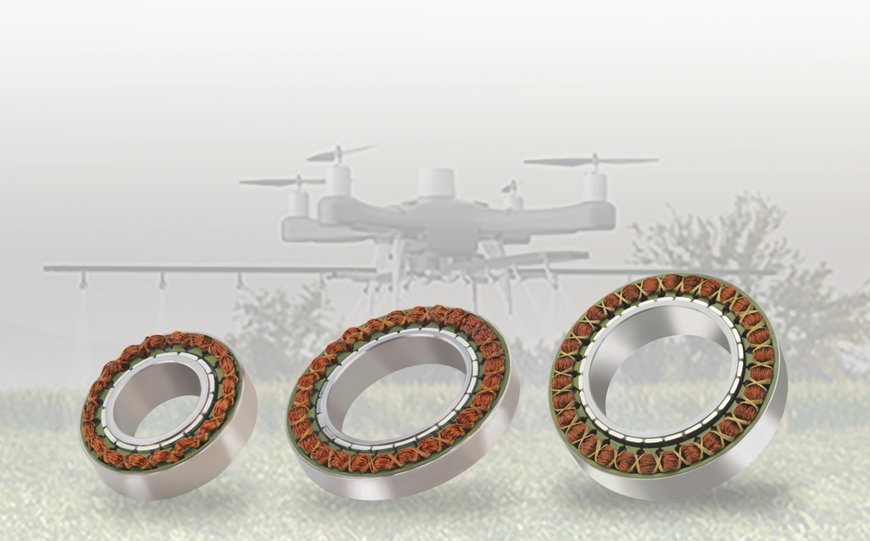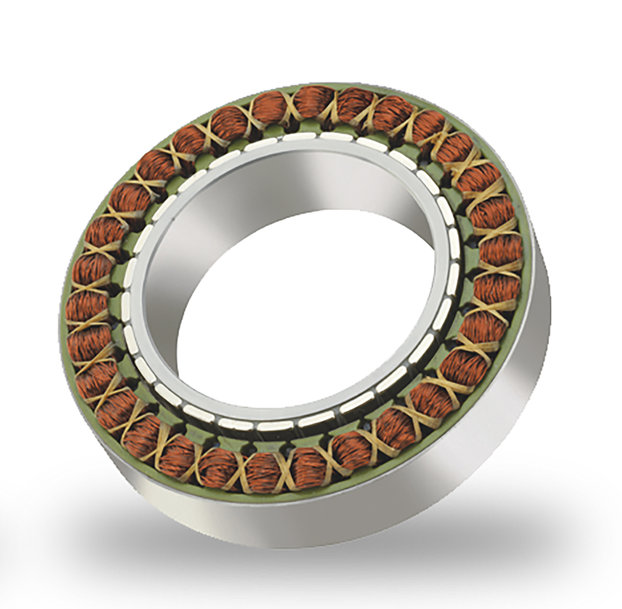www.magazine-industry-usa.com
08
'23
Written on Modified on
Maximizing Efficiency: The Art of Motor Selection for Battery-Powered Industrial Equipment
By Gerard Bush, Motion Specialist at INMOCO explores the most important considerations in motor selection for battery-powered applications, illuminating the path to a more sustainable and competitive future.

In a world where 37% of global energy consumption stems from industrial processes, the shift toward battery-powered equipment has never been more critical. This transition is driven by the dual demands of enhanced efficiency and sustainability. Central to this challenge is the selection of a motor – the heart of any industrial equipment – that not only meets stringent performance requirements but also optimises battery life for prolonged, effective operation.
The Importance of Motor Efficiency
In today's rapidly evolving industrial landscape, motor efficiency is more than a mere specification; it is a critical design parameter, especially for battery-powered applications. Efficient motors draw less current, reducing the load on batteries and significantly extending the operating time between charges. This is paramount in industries where downtime can result in substantial financial losses. Furthermore, motor efficiency is intrinsically linked to sustainability.
As industries worldwide grapple with environmental responsibilities, highly efficient motors emerge as heroes. They not only reduce energy consumption but also minimise heat generation and wear, resulting in longer motor life and less waste. In an era of soaring energy costs and growing environmental concerns, optimising motor efficiency is an economic imperative and important for environmental stewardship.
Sizing Motors Correctly
Selecting the right motor size for a specific application is a fundamental step in any design process, ensuring optimal performance and energy use. When a motor is properly sized to an application’s requirements, it operates at peak efficiency, thereby reducing energy costs and wear. Conversely, an undersized motor may struggle to handle the load, leading to overheating and premature failure. On the other hand, an oversized motor tends to operate below its optimal load range, resulting in poor efficiency and higher operating costs. In a competitive and resource-conscious world, the precise sizing of motors is not just a technical detail, it is a critical financial and operational decision.
Key Motor Constants and Performance Metrics
Motor constants, such as the torque constant (expressed as Km), are essential tools for engineers when comparing and selecting motors. These constants offer insights into a motor's performance characteristics, helping to predict how it will behave under various load conditions. For example, a higher Km value typically indicates greater torque for a given current, a crucial factor in applications like robotics, where precise movement is required. In the design of an automated assembly line, engineers might choose a motor with a specific Km value to ensure that it can move parts swiftly and accurately while minimising energy consumption.

Thermal Management Strategies
Heat generation is a significant challenge in electric motors, particularly in compact, battery-powered applications where space is at a premium. Effective thermal management is crucial to maintain performance, efficiency, and longevity of motors. Common strategies include active cooling systems, such as fans or liquid cooling, and passive solutions like heat sinks or thermal pads. Designing with thermal management in mind is not just a technical necessity, it’s a pivotal aspect that can dictate the success and reliability of the entire application.
Power Supply Integration and Battery Life
The integration of motor and power supply designs is a crucial element of any battery-powered application. A motor’s efficiency directly affects the rate at which a battery is drained; the more efficiently a motor operates, the less power it draws from the battery, subsequently extending battery life. Engineers can optimise this relationship by carefully selecting motors with suitable voltage, current, and power ratings that align with the battery’s capacity and discharge characteristics. Additionally, employing advanced control strategies, such as regenerative braking, can further harmonise this relationship, enhancing performance while preserving precious battery energy.
Emerging Technologies and Innovations
Emerging motor technologies, such as high-efficiency permanent magnet synchronous motors (PMSMs) and switched reluctance motors (SRMs), are reshaping the landscape of industrial equipment design. These innovations promise increased efficiency, translating into lower energy consumption for battery-powered applications. For example, SRMs are gaining traction due to their high efficiency and lower losses under partial load conditions. As battery technology continues to evolve alongside these motor innovations, engineers will increasingly have the tools to design industrial equipment with prolonged operational time and reduced energy costs. Staying abreast of these technologies will be paramount for future successes in equipment design.
Motor selection and design are pivotal in battery-powered industrial applications. From sizing motors correctly to avoiding thermal challenges and managing power supply integration, each decision plays a crucial role in the overall efficiency and longevity of equipment. Emerging technologies are ushering in a new era of potential, offering promising pathways for increased efficiency and sustainability. For engineers and manufacturers, investing time to understand and optimise motor efficiency is not merely beneficial—it is essential. As competition tightens and sustainability becomes paramount, this knowledge will be a defining factor for success. Act now to ensure your designs lead the future of industrial equipment.
www.inmoco.com

